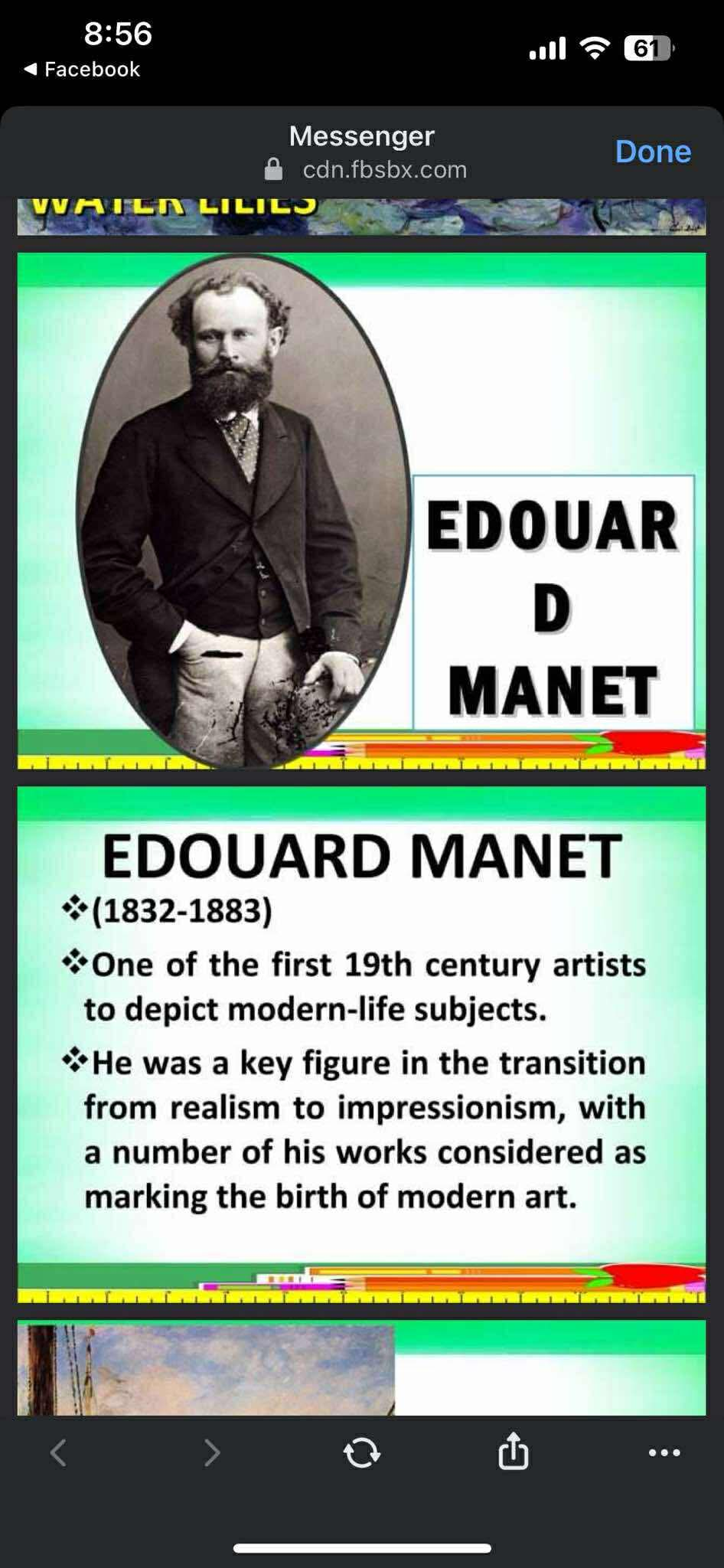Impressionism Lecture Notes
1/12
Earn XP
Description and Tags
Vocabulary flashcards summarizing key terms and concepts about Impressionism, its characteristics, and Claude Monet.
Name | Mastery | Learn | Test | Matching | Spaced |
|---|
No study sessions yet.
13 Terms
Impressionism
An art movement that emerged in the second half of the 19th century among Paris-based artists, aiming to capture a viewer’s momentary impression of a scene.
Origin of the Name "Impressionism"
Derived from Claude Monet’s 1872 painting "Impression, Sunrise" (Impression, soleil levant).
Momentary Impression
The goal of Impressionist art: depict a fleeting fragment of reality rather than a clear, precise image.
Color and Light (Impressionist Trait)
Use of short, broken brushstrokes, pure unmixed colors placed side by side, and freely brushed pigment to convey visual effects of light.
Everyday Subjects
Common Impressionist themes such as scenes of daily life, household objects, landscapes, seascapes, houses, cafés, and buildings.
Painting Outdoors (En plein air)
Impressionists painted outside to capture natural light’s changing effects on color, rather than working solely in studios.
Open Composition
Impressionist departure from formal, structured arrangements, allowing subjects to be off-center or cropped like a snapshot.
Claude Monet (1840–1926)
French painter, co-founder and most influential figure of Impressionism, famed for his Giverny garden and water-lily landscapes.
Monet’s Colleagues
Auguste Renoir, Alfred Sisley, and Frédéric Bazille—fellow founders of the Impressionist movement.
Landscape Painting in Impressionism
A principal genre for many Impressionists, emphasizing natural light and atmospheric conditions.
Short Broken Strokes
Technique in which distinct dabs of paint are laid next to each other to blend optically at a distance.
Pure Unmixed Colors
Placement of vivid pigments side by side without blending on the palette, enhancing vibrancy through optical mixing.
